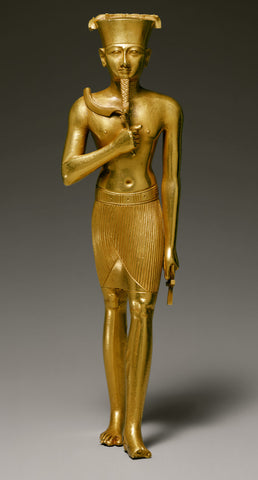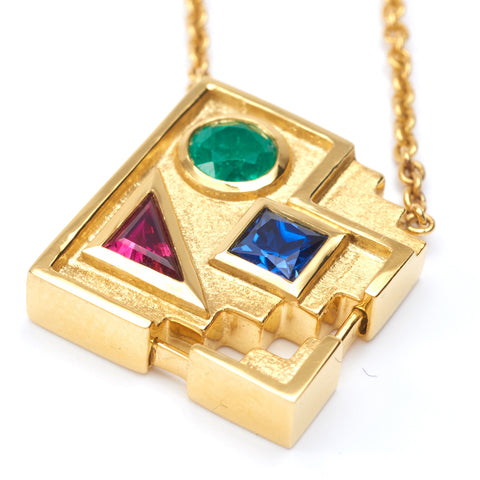Gold has been a signifier of luxury and wealth for people since ancient history. Its use has been documented since the 5th Millennium BCE, preceding even the bronze age. Since then, it has been a preferred material for jewelry, coinage, and the arts. Unlike other metals which have been forged since ancient times, gold is not reactive and does not change its color. Archeologists have found finely preserved gold jewelry from ancient cultures all over the world including the Mayans, Romans, and Egyptians.
What makes this material so special? Why has it been worn by rulers across the world since recorded human history? This article breaks down the key physical, aesthetic, and historical reasons for gold's dominance across the jewelry market.

(Egyptian statue of Amun, image from the Met archives)
What is it and why does it cost so much?
The only downside of gold is the expense, so let’s get that out of the way. At $1320 per troy ounce as of 2016, it’s over $300 an ounce more than platinum and almost 100 times more expensive than silver.
Gold is so expensive simply because it is so rare. As a pure element on the periodic table, it cannot be manufactured synthetically by any economical process. Of course, when you get custom gold jewelry from Westies & Co, you're getting something even rarer as it's custom made for you.
Due to the expense of pure gold, the term “gold” has become overloaded. Many forms of plating and coating are rampant in a futile attempt to get the look of gold without the expense. The price is lower, but the look and feel doesn't come close. In the US, the Federal Trade Commission (FTC) acknowledges this and attempts to regulate it. When Westie’s refers to gold jewelry, we’re talking about solid gold alloys. According to the FTC, solid gold jewelry is not hollow and made from a gold alloy containing at least 10 parts in 24 pure gold (i.e. 10K or greater). We don’t use gold fill or vermeil to make our jewelry.

Pure gold casting grain (image from APMEX)
Measurables
Many of gold’s properties make it favorable for making jewelry. Gold is:
- Rare
- Malleable
- Highly Reflective
- Non Reactive
- Yellow
These properties combine to form a very attractive metal for jewelry. It’s highly durable and yet easy to work with for a jeweler. It’s highly lustrous, in fact it’s one of the most reflective metals. Gold in its pure form hardly reacts with any chemicals. You could bury a solid gold item and it would not rust. Nothing in the atmosphere will react with gold. Gold is extremely rare. Only about 170,000 tons of gold has ever been mined. These qualities make gold amazing for storing value, which is why it’s long been the world’s reserve currency. Additionally, no other metals are yellow in their elemental form. Silver, palladium, platinum, and rhodium are all precious metals that share a similar white color. Gold's color is so unique that it's frequently simply referred to as "gold."
Immeasurables
Gold is historically the metal of kings and imbues its wearer with status. Egyptian pharaohs wore gold chains. President Obama received a gold chain and pendant from the Saudi royal family in addition to other gifts made from gold. Its status is opulent. The Broken Image pendant and Void Main pendant both elevate their symbols from utilitarian to luxe by using this regal material. Check them out here.

